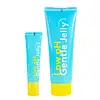What's inside
What's inside
 Key Ingredients
Key Ingredients

 Benefits
Benefits

 Concerns
Concerns

 Ingredients Side-by-side
Ingredients Side-by-side

Water
Skin ConditioningPotassium Laureth Phosphate
EmulsifyingGlycerin
HumectantPotassium Cocoyl Glutamate
Acrylates/C10-30 Alkyl Acrylate Crosspolymer
Emulsion StabilisingButylene Glycol
HumectantCentella Asiatica Leaf Water
Skin ConditioningCaprylic/Capric Triglyceride
MaskingAspartic Acid
MaskingCaprylyl Glycol
EmollientSodium Cocoyl Glutamate
Cleansing1,2-Hexanediol
Skin ConditioningLauryl Hydroxysultaine
CleansingCoco-Glucoside
CleansingPolyglyceryl-10 Laurate
Skin ConditioningPolyglyceryl-10 Myristate
Skin ConditioningGlyceryl Caprylate
EmollientMelaleuca Alternifolia Leaf Oil
AntioxidantSodium Cocoyl Isethionate
CleansingDisodium EDTA
Calendula Officinalis Flower Extract
MaskingMentha Piperita Oil
MaskingQuillaja Saponaria Bark Extract
CleansingArtemisia Capillaris Extract
Water, Potassium Laureth Phosphate, Glycerin, Potassium Cocoyl Glutamate, Acrylates/C10-30 Alkyl Acrylate Crosspolymer, Butylene Glycol, Centella Asiatica Leaf Water, Caprylic/Capric Triglyceride, Aspartic Acid, Caprylyl Glycol, Sodium Cocoyl Glutamate, 1,2-Hexanediol, Lauryl Hydroxysultaine, Coco-Glucoside, Polyglyceryl-10 Laurate, Polyglyceryl-10 Myristate, Glyceryl Caprylate, Melaleuca Alternifolia Leaf Oil, Sodium Cocoyl Isethionate, Disodium EDTA, Calendula Officinalis Flower Extract, Mentha Piperita Oil, Quillaja Saponaria Bark Extract, Artemisia Capillaris Extract
 Reviews
Reviews

Alternatives
Ingredients Explained
These ingredients are found in both products.
Ingredients higher up in an ingredient list are typically present in a larger amount.
Butylene Glycol (or BG) is used within cosmetic products for a few different reasons:
Overall, Butylene Glycol is a safe and well-rounded ingredient that works well with other ingredients.
Though this ingredient works well with most skin types, some people with sensitive skin may experience a reaction such as allergic rashes, closed comedones, or itchiness.
Learn more about Butylene GlycolGlycerin is already naturally found in your skin. It helps moisturize and protect your skin.
A study from 2016 found glycerin to be more effective as a humectant than AHAs and hyaluronic acid.
As a humectant, it helps the skin stay hydrated by pulling moisture to your skin. The low molecular weight of glycerin allows it to pull moisture into the deeper layers of your skin.
Hydrated skin improves your skin barrier; Your skin barrier helps protect against irritants and bacteria.
Glycerin has also been found to have antimicrobial and antiviral properties. Due to these properties, glycerin is often used in wound and burn treatments.
In cosmetics, glycerin is usually derived from plants such as soybean or palm. However, it can also be sourced from animals, such as tallow or animal fat.
This ingredient is organic, colorless, odorless, and non-toxic.
Glycerin is the name for this ingredient in American English. British English uses Glycerol/Glycerine.
Learn more about Glycerin